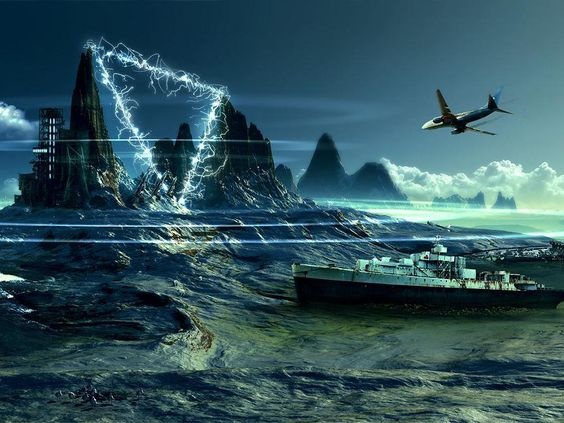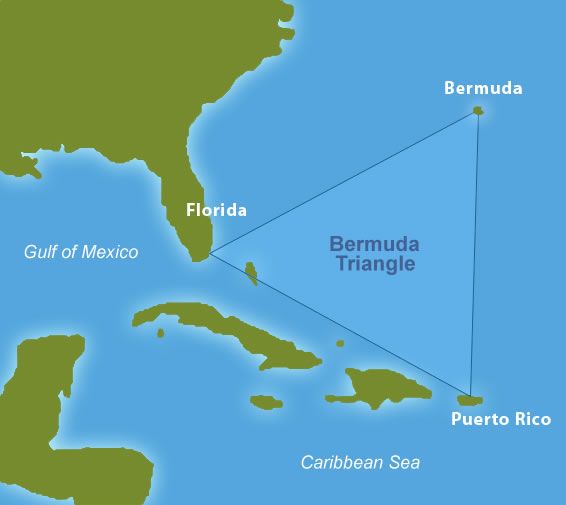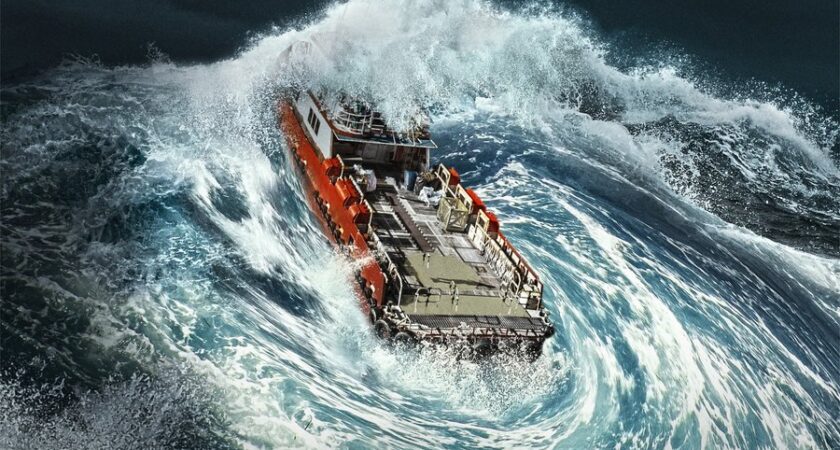History is littered with false narratives. Over time, these myths can end up being accepted, at least by popular culture, as fact. For example, much of what is attributed to the life of Henry VIII actually comes from the Shakespeare play of the same name, and not from legitimate historical evidence.
While some of these stories contain a mixture of fact and fiction, like the aforementioned Henry VIII, others are just completely made up. Which brings us to the Bermuda Triangle – a historical conspiracy that has been debunked time and time again, but just won’t go away.
Also known as the Devil’s Triangle, it roughly covers the area located in between the southeast coast of Florida, the small island of Puerto Rico, and the even smaller British owned island of Bermuda. Hitherto, it has developed a reputation for being unusually dangerous for ships and planes, despite dozens of ships and planes passing through the area everyday without incident.
Where does this come from?
The term “Bermuda Triangle” was coined by Vincent Gaddis in a 1964 edition of Argosy magazine. This magazine was devoted to all things supernatural, paranormal and generally mysterious. Not exactly a well sourced academic journal.
Interest in the triangle continued to grow, but it was two books written in 1974 which really made it famous. Language teacher Charles Berlitz released a book simply titled “The Bermuda Triangle” which sold a whopping 20 Million copies. In it, Berlitz argues that the triangle is a by-product of our destruction of the lost city of Atlantis.
The second, written by Richard Winer, was called “The Devil’s Triangle”. On the book’s cover it claims to have photos of the mysterious activities inside, but it doesn’t – they’re drawings. As historian Sean Munger points out, any report on the Bermuda Triangle very rarely involves any hard evidence or thorough critical examination, but rather a laundry list of stories and anecdotes involving the spooky disappearances of ships and planes.

Some proper analysis
The late public intellectual Christopher Hitchens, always stressed that extraordinary claims require extraordinary evidence. Some of the more ‘creative’ explanations for the disappearances in the Triangle include ghosts, demons, alien spaceships, time travellers, wormholes or some other gateway to another dimension etc. Skeptic Society President, Dr. Michael Shermer, reminds us that unexplained doesn’t mean alien or supernatural, it simply means unexplained.
Dr. Shermer also refers to a 1976 episode of the Nova documentary series on PBS, which said the following about the Triangle phenomenon: “When we’ve gone back to the original sources or the people involved, the mystery evaporates. Science does not have to answer questions about the triangle because those questions are not valid in the first place…Ships and Planes behave in the triangle the same way they behave everywhere else in the world.”
The infamous Flight 19
The main case cited by advocates of the conspiracy, is the disappearance of Flight 19 in December 1945. Flight 19 consisted of 5 US Navy Torpedo Bombers on a training mission over the Florida Keys. The pilots were being trained to use their navigation equipment by squadron leader Lt. Charles Taylor.
Unfortunately, the planes all flew off course and were never seen or heard from again. A large Marlin Mariner Patrol Bomber was dispatched on a search and rescue mission, and it too, vanished from radar. The Naval investigation concluded that Taylor’s navigation systems failed, with Taylor himself becoming disorientated, and mistakenly leading the squad out over the open sea, instead of back to base.
The 400 page Naval Report also concluded that the Marlin Mariner was lost due to a mid-air explosion, which occurred whilst they were searching for Flight 19. These particular planes were known for carrying a dangerously large amount of fuel, and accidents like this were not unheard of.

Putting it to bed
The most comprehensive investigation into the Bermuda Triangle was done by Larry Kusche in his 1975 book “The Bermuda Triangle Mystery – Solved”. Kusche’s extensive research convinced him that virtually all the incidents had been caused by storms or accidents, or they happened well outside the Triangle, or no proof could be found that they ever occurred at all!
His conclusion was that the whole legend of the Bermuda Triangle is a manufactured mystery – perpetuated by writers who did sloppy research, told many half-truths, sensationalised their stories, or simply made stuff up.
Far more planes crash over dry land than at sea, but we can obtain that wreckage. We don’t always have the wreckage for vessels lost in the Atlantic – it’s a little deep!
Which brings us to Lloyds of London – the largest maritime insurance company in the world for the last 150 years. They do not consider the area to be particularly dangerous. This is significant, because if it was an unusually treacherous area, it would be in Lloyd’s financial interest to recognise it. They could then justify charging their customers with higher insurance premiums.
The End?
So, can we safely consign the Bermuda Triangle to the dustbin of history? Given our societies current appetite for conspiracy theories, probably not. But consider the following:
One of the ‘mystery disappearances’ is that of the SS Cotopaxi, a cargo ship that was lost in bad weather, way back in 1925. Sean Munger discovered that over 30 years ago a wreck was found on the sea bed, and in February 2020 it was finally identified beyond all doubt, as the wreck of the SS Cotopaxi.
Divers also found that the cargo hatch covers on the Cotopaxi were faulty, thus the ship would have taken on lots of water in the storm. Mystery solved. Let’s hope that this positive trend (technology permitting) can continue, and people stop blaming these prosaic disappearances on the boogie man.

